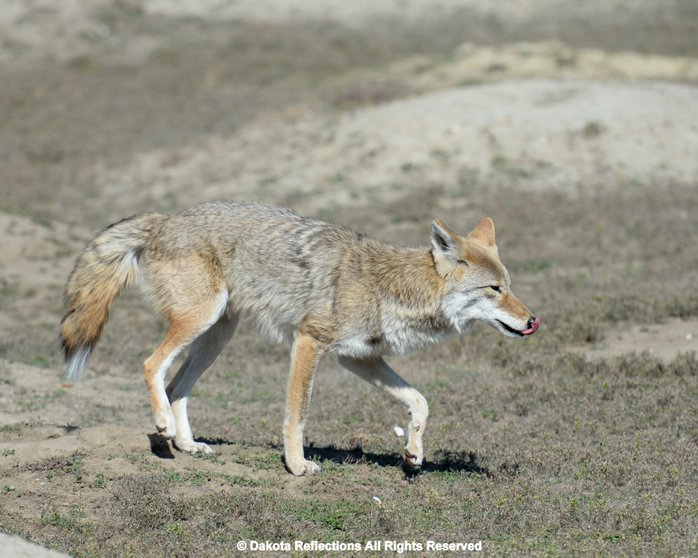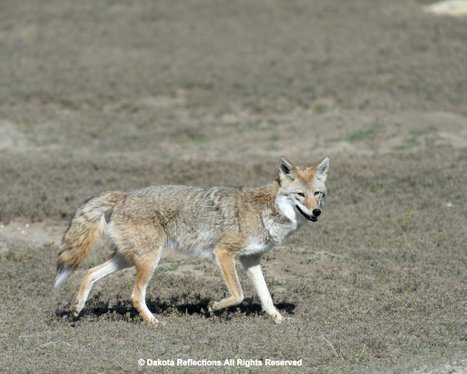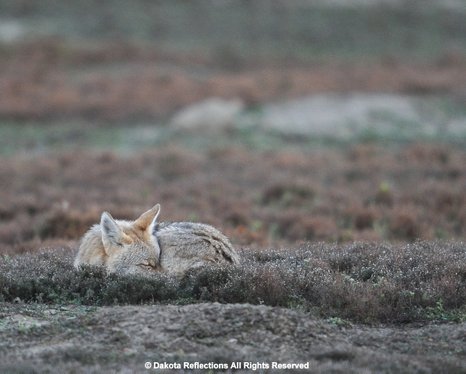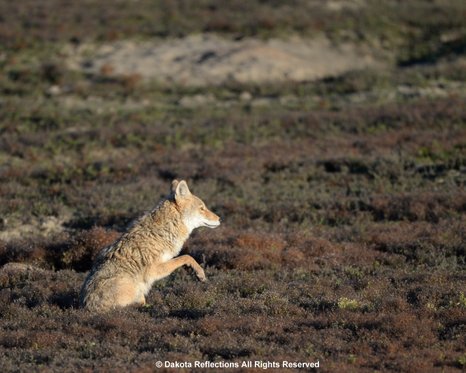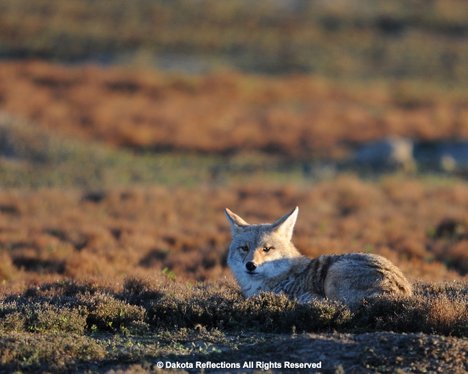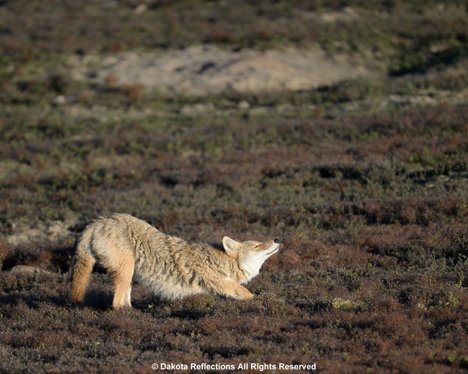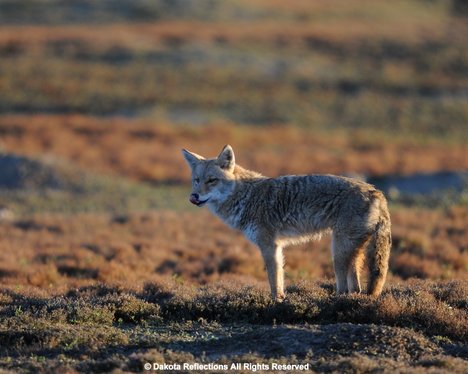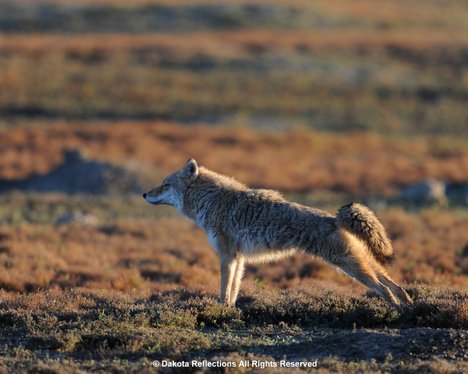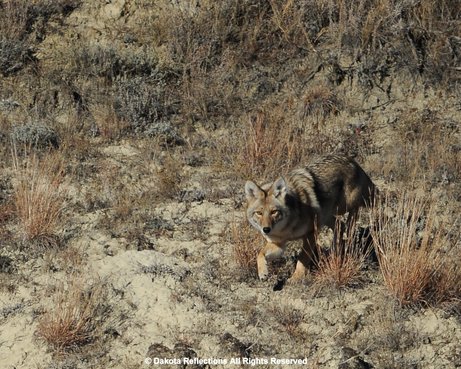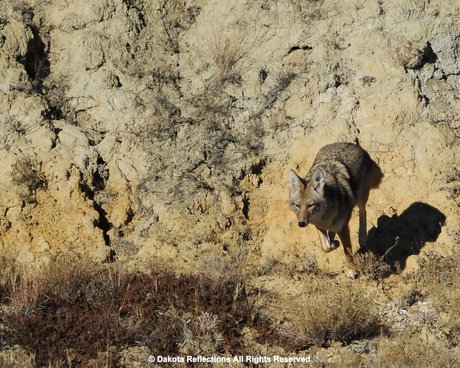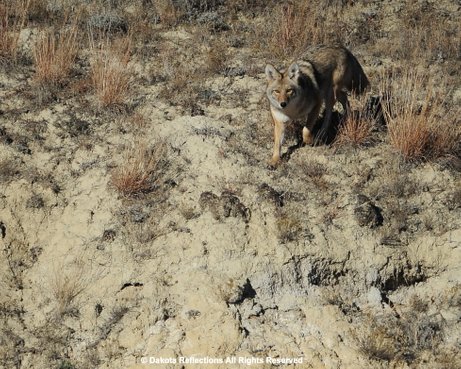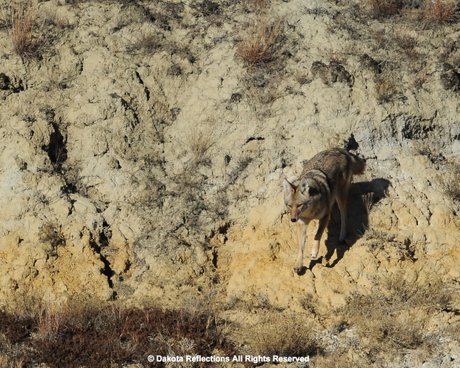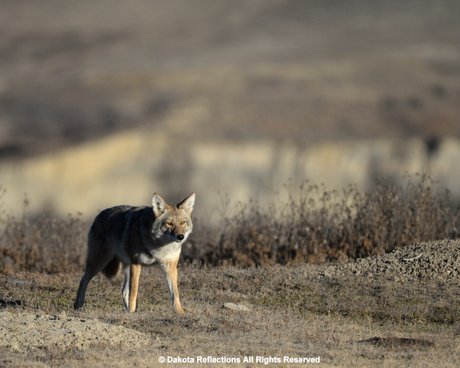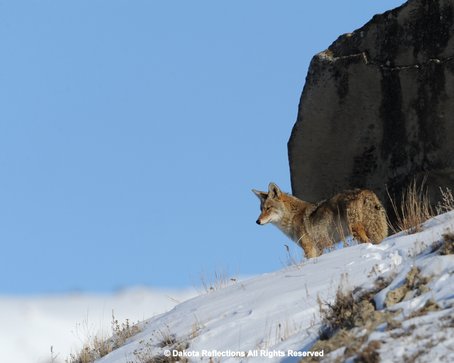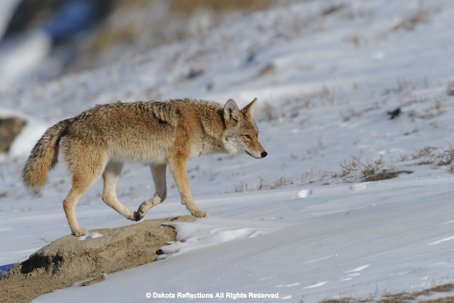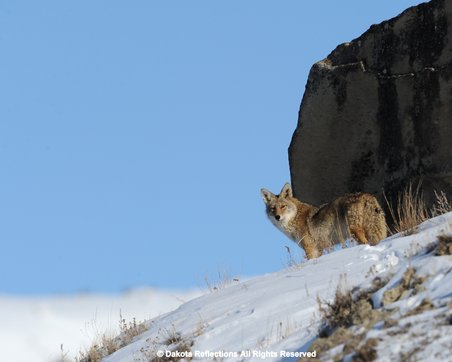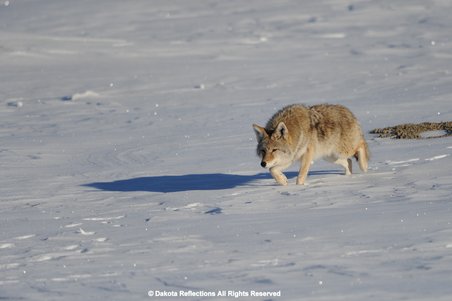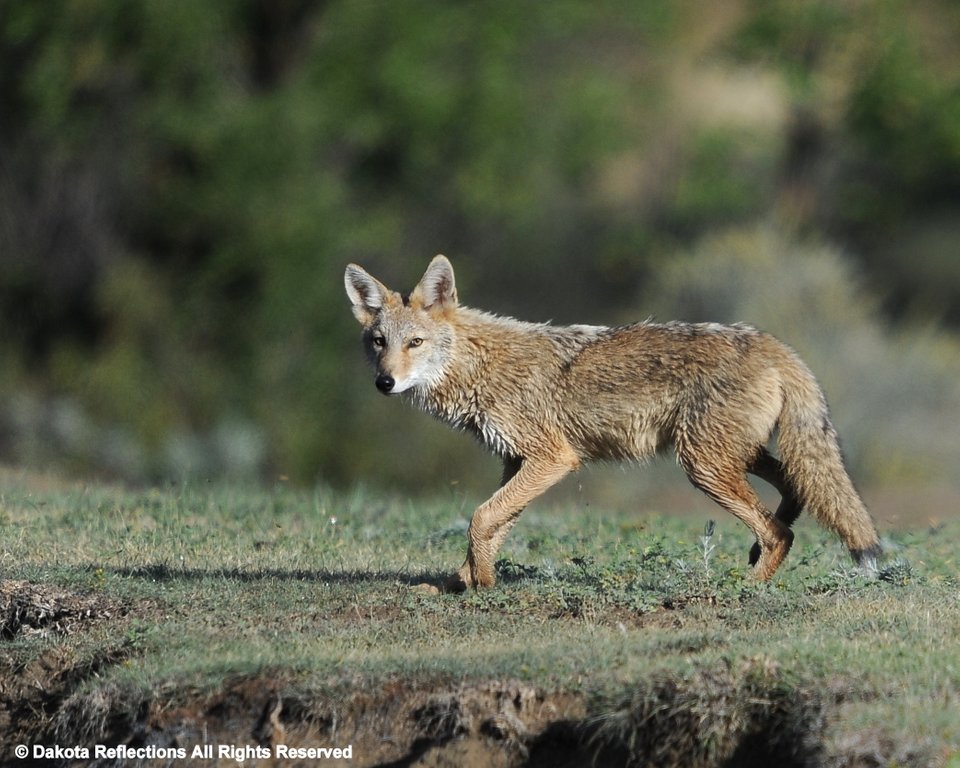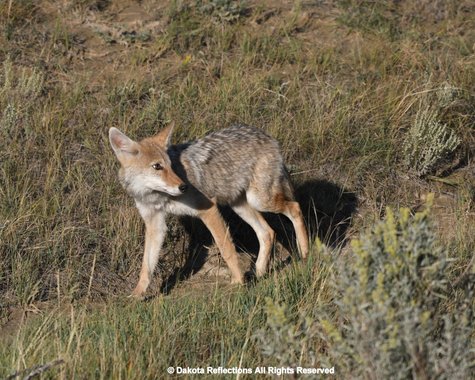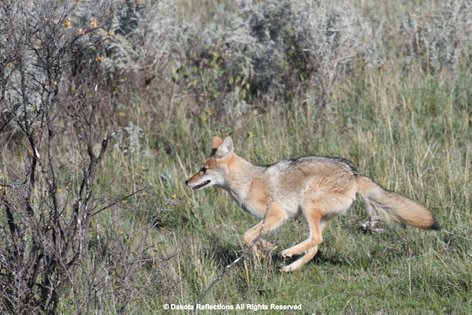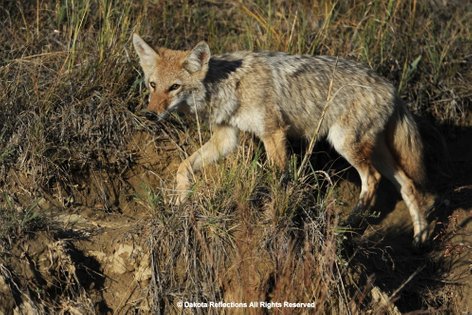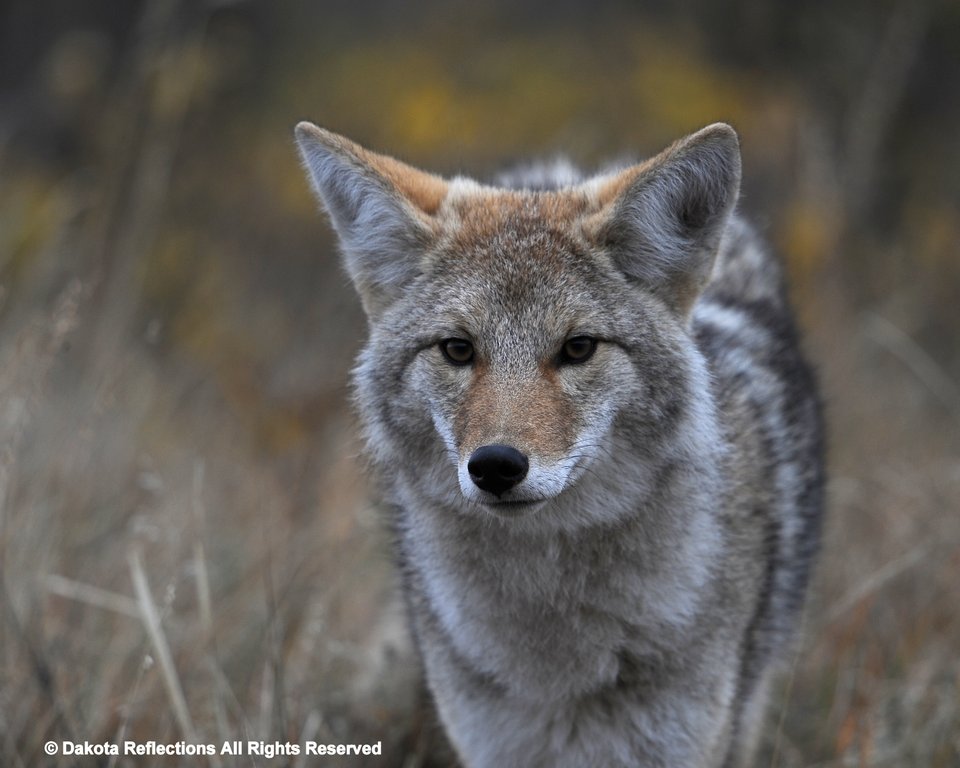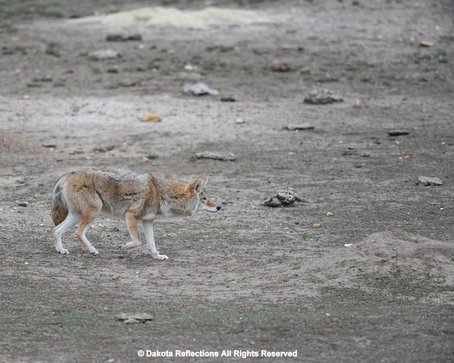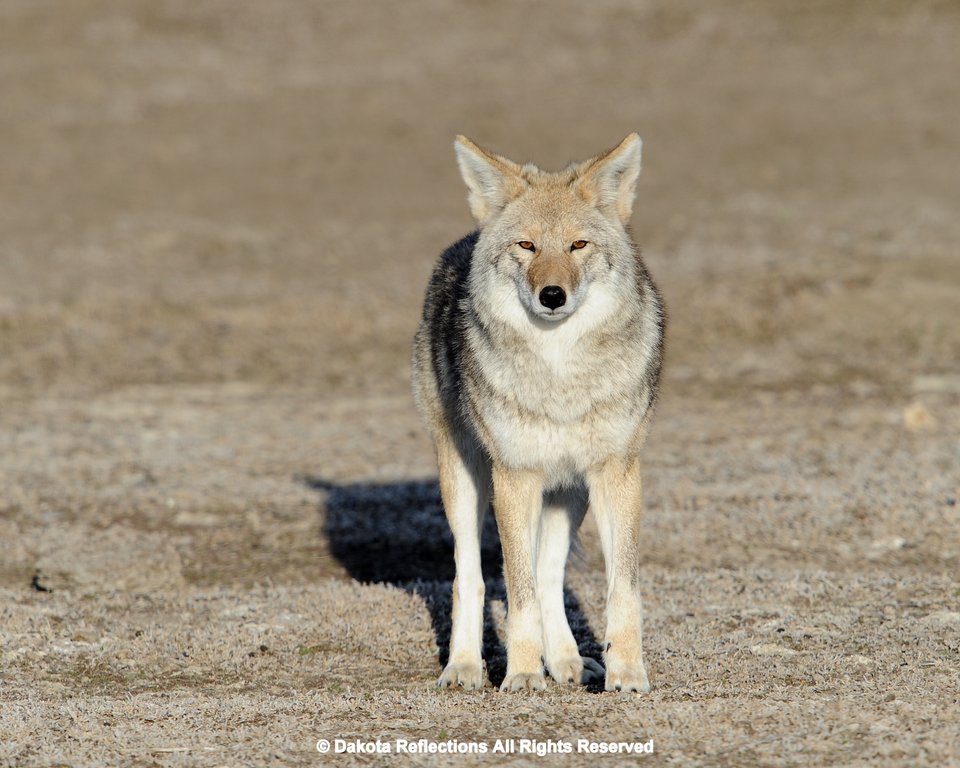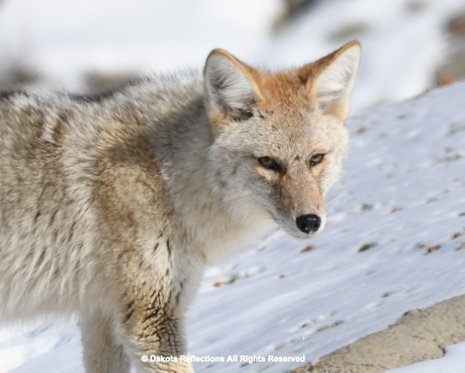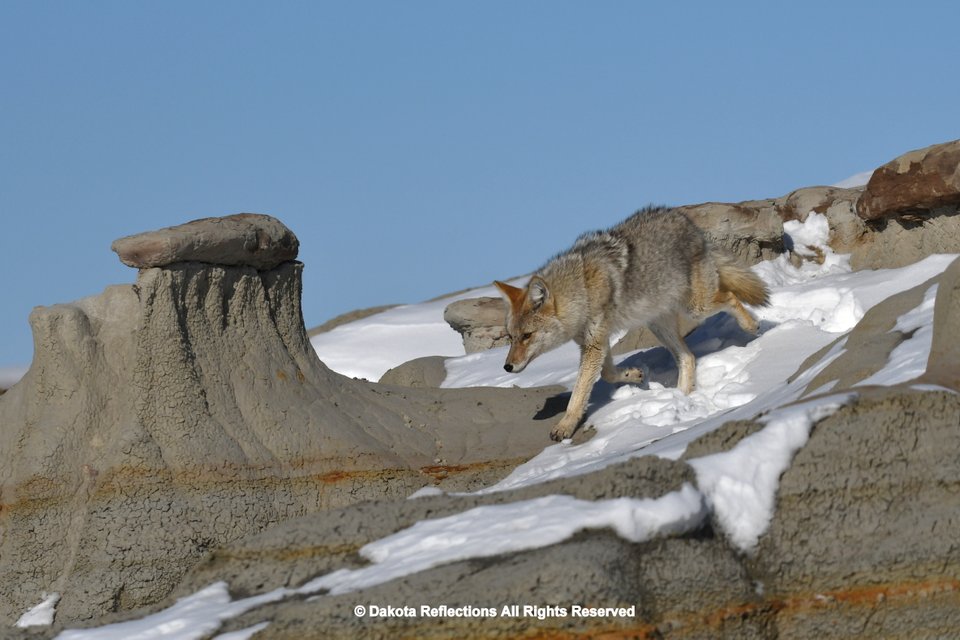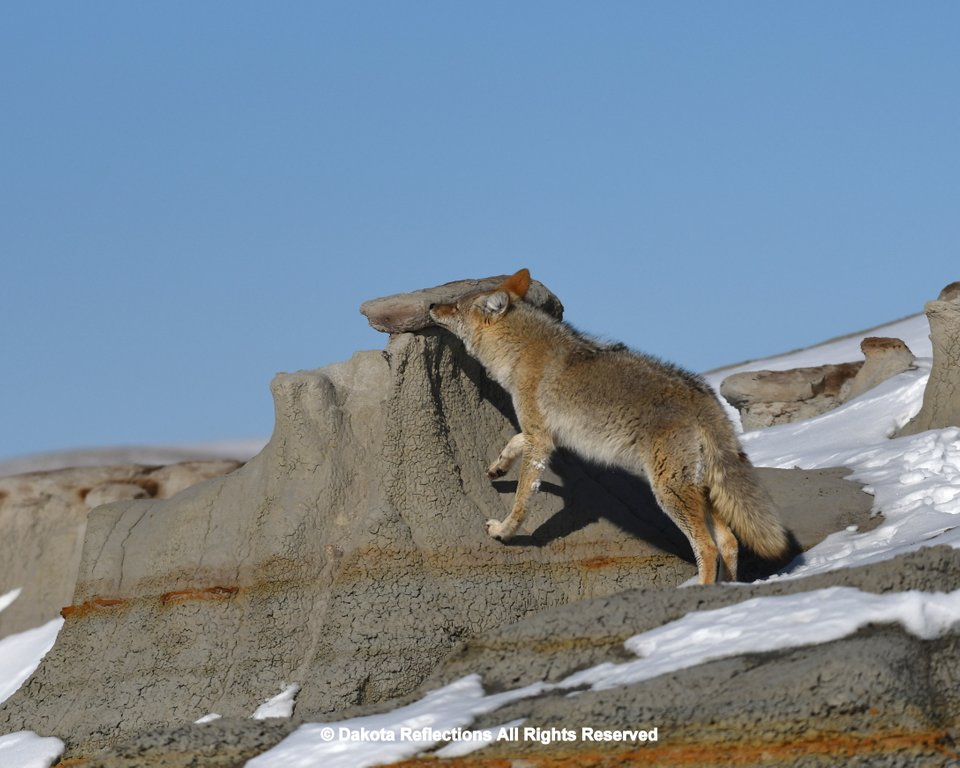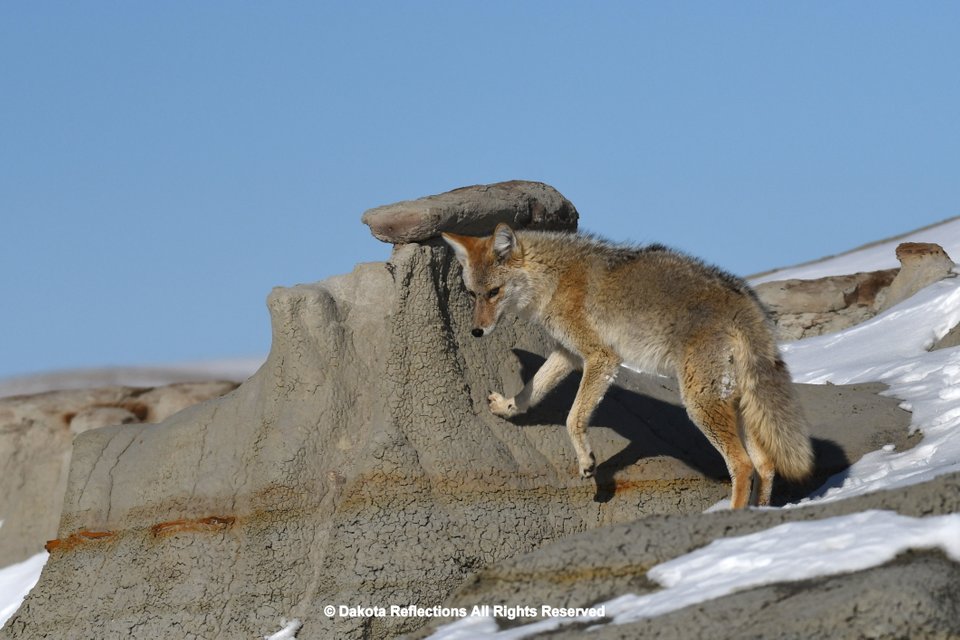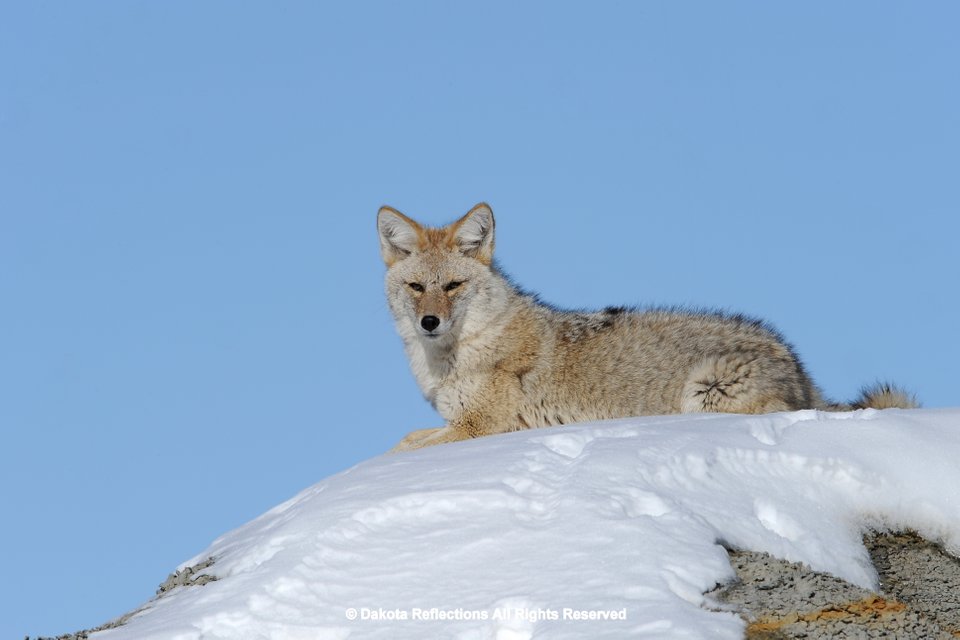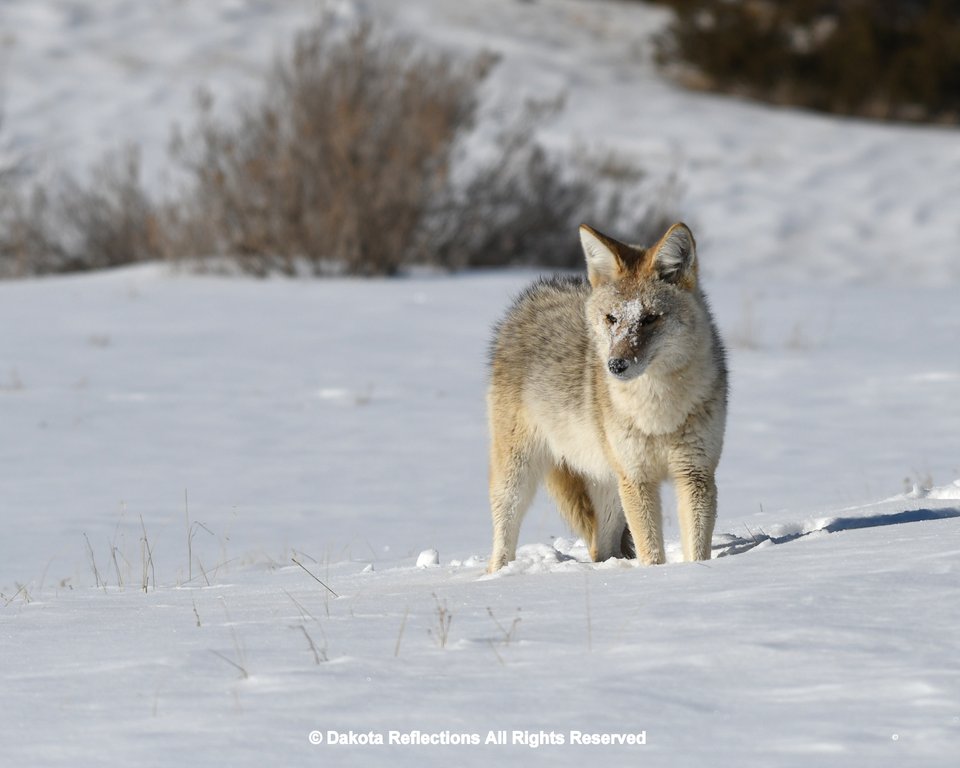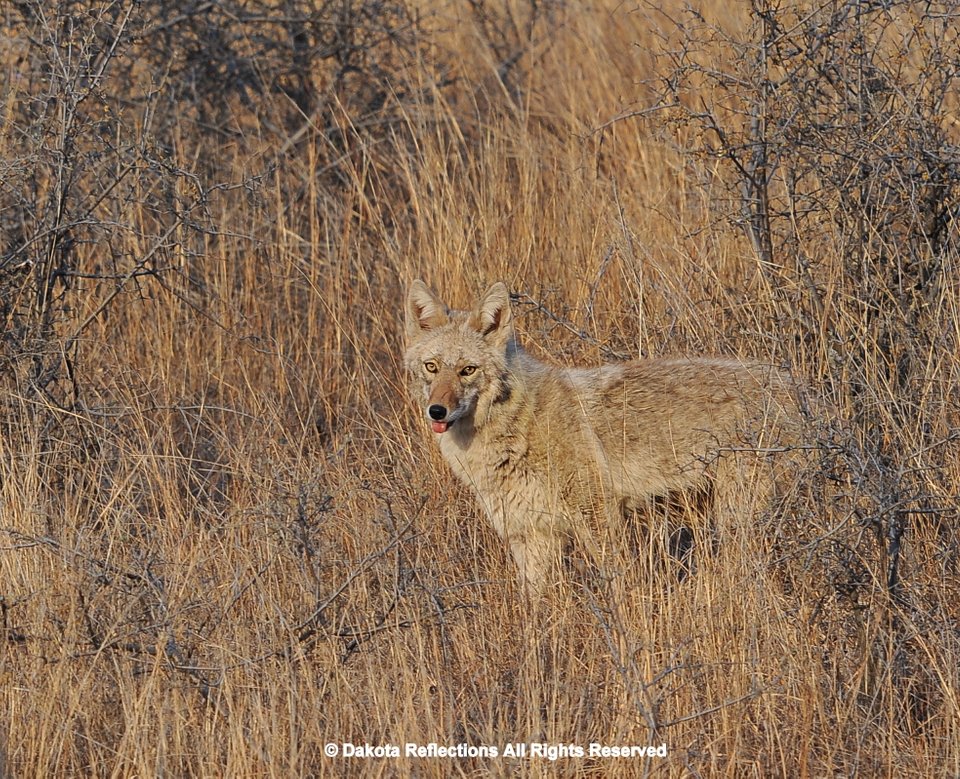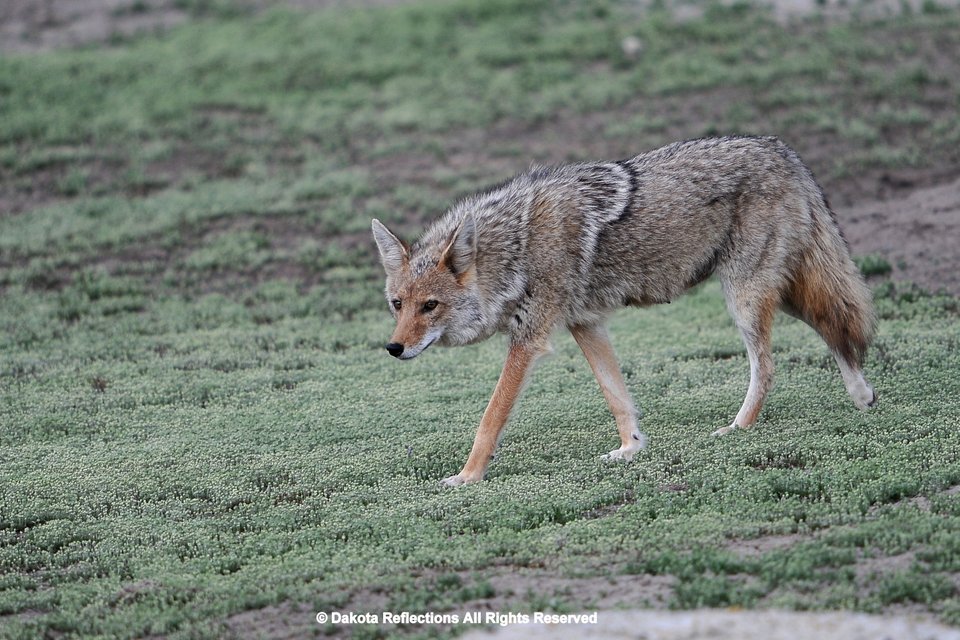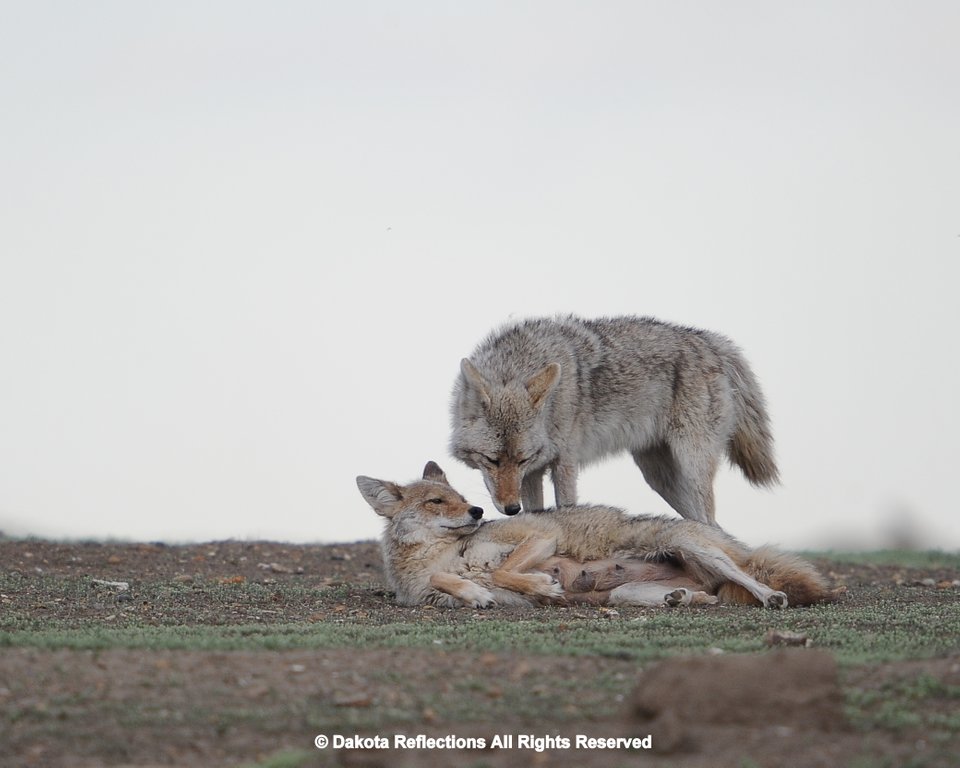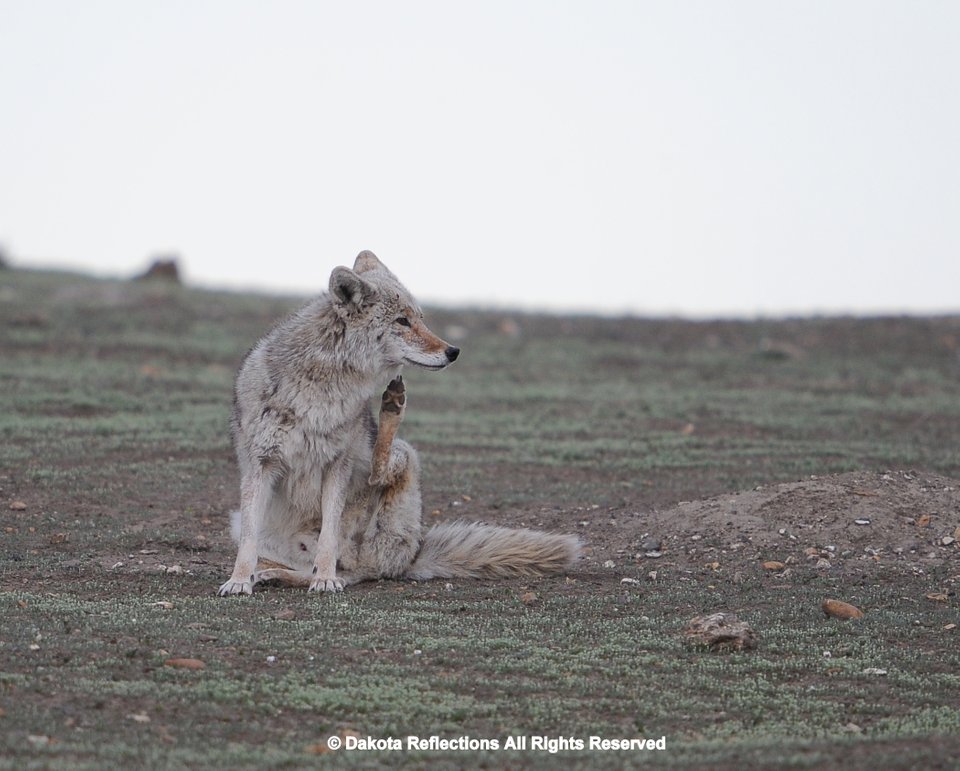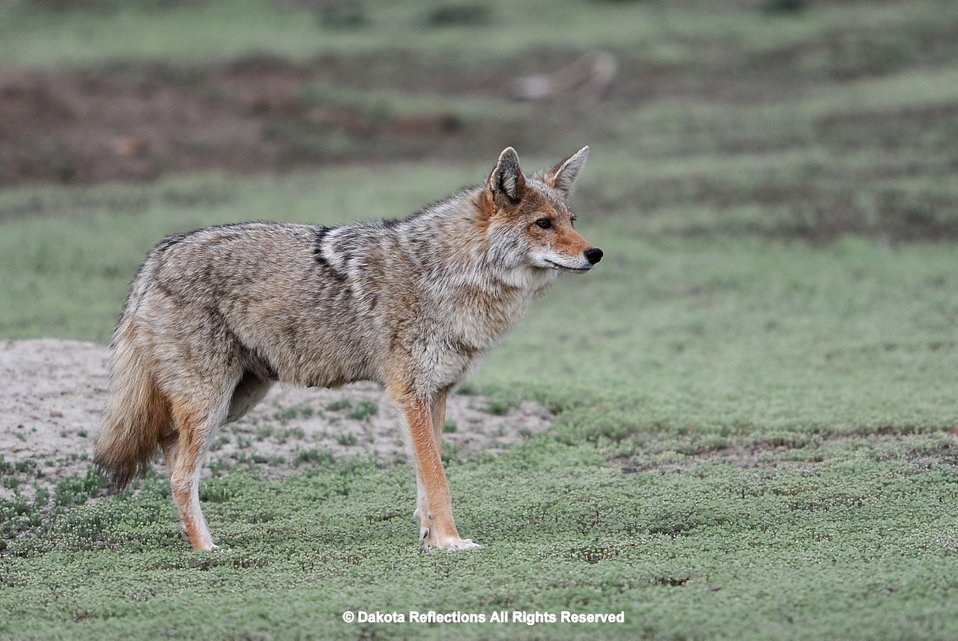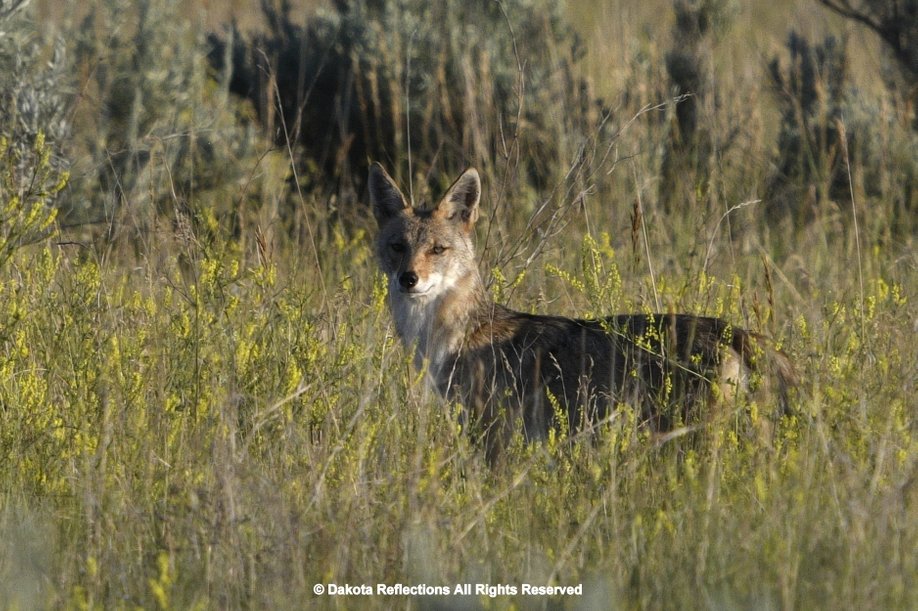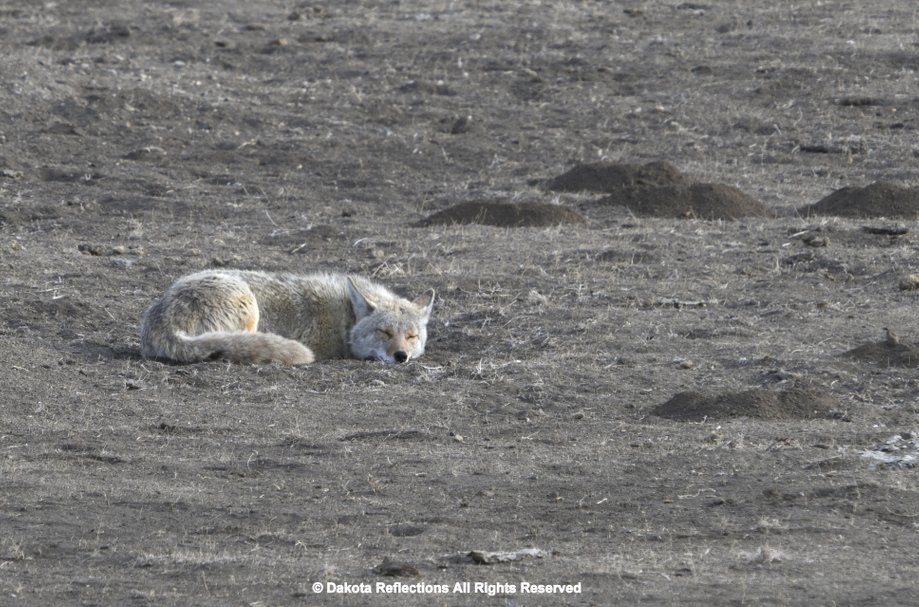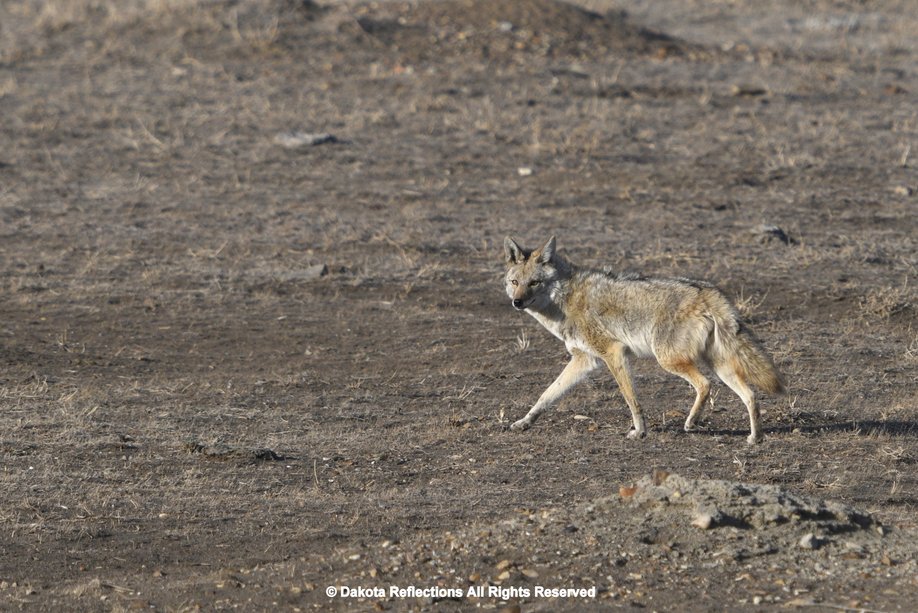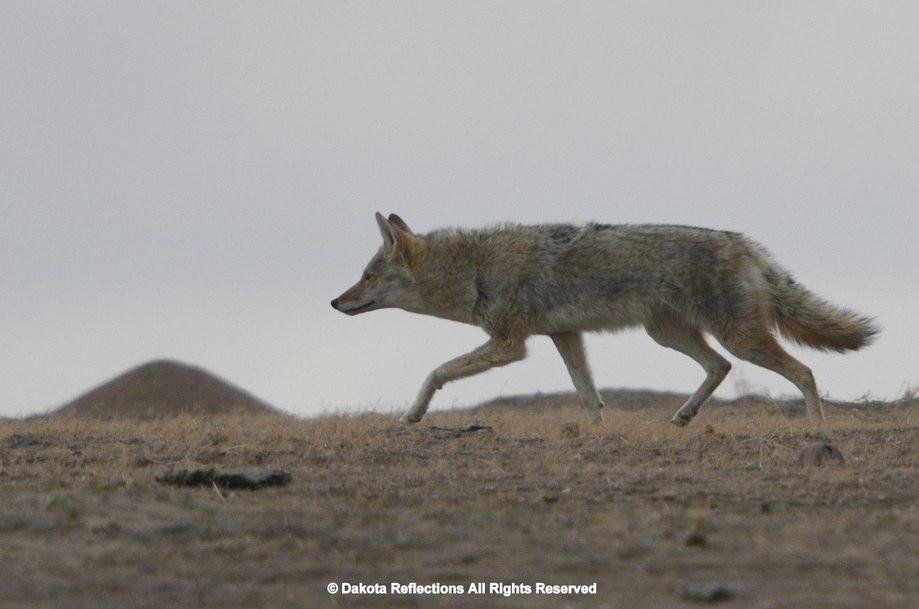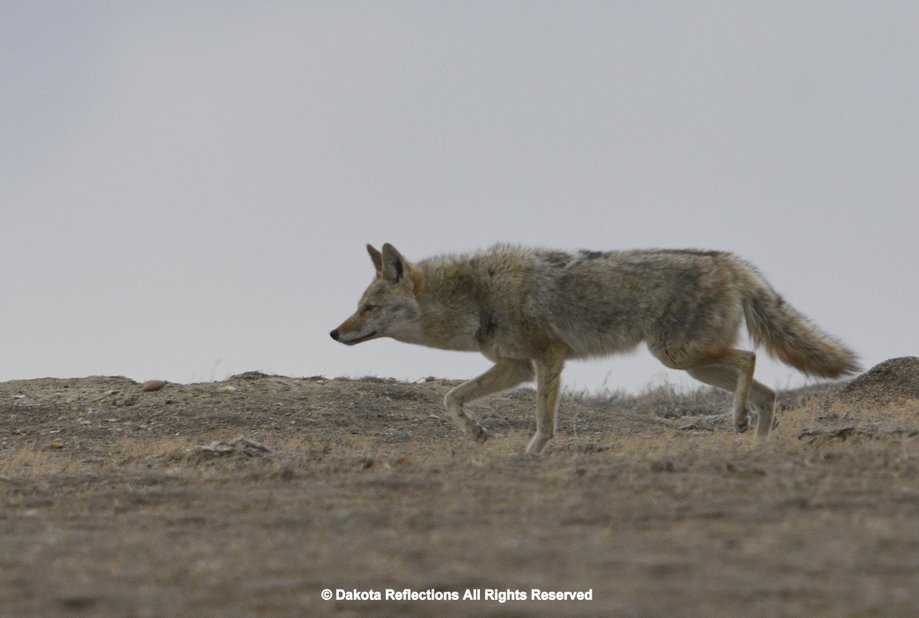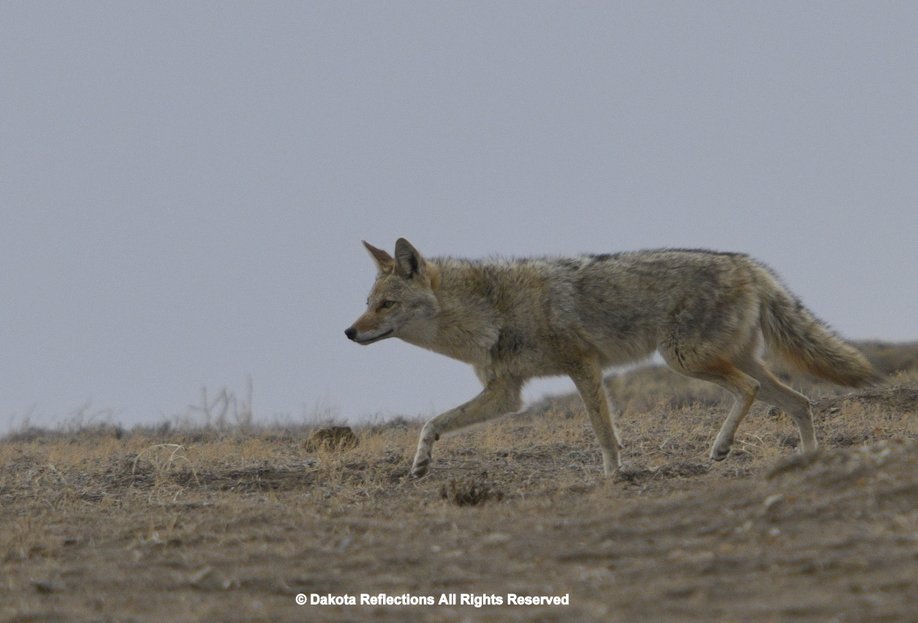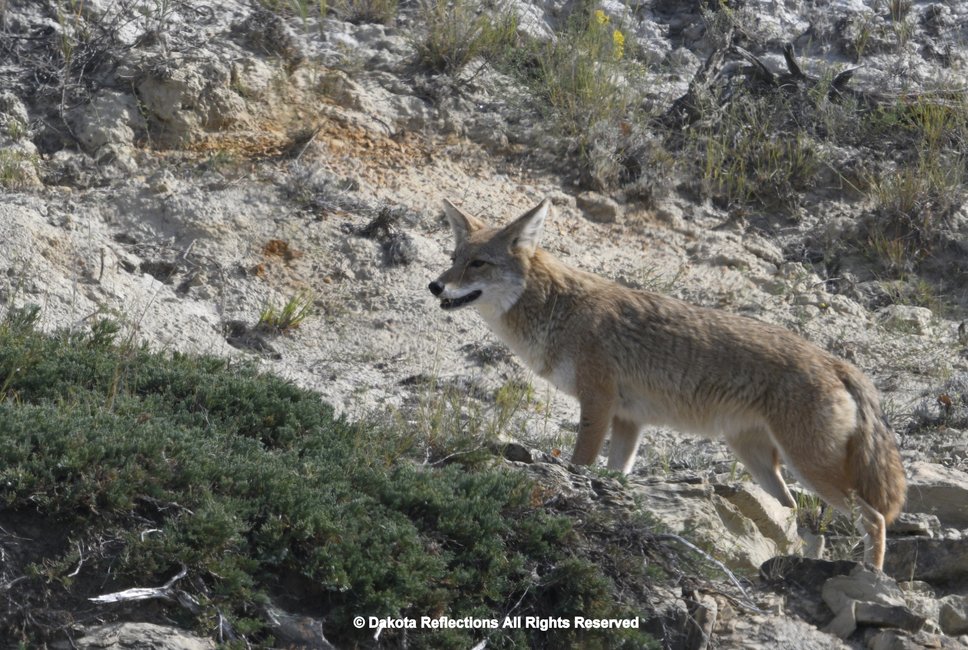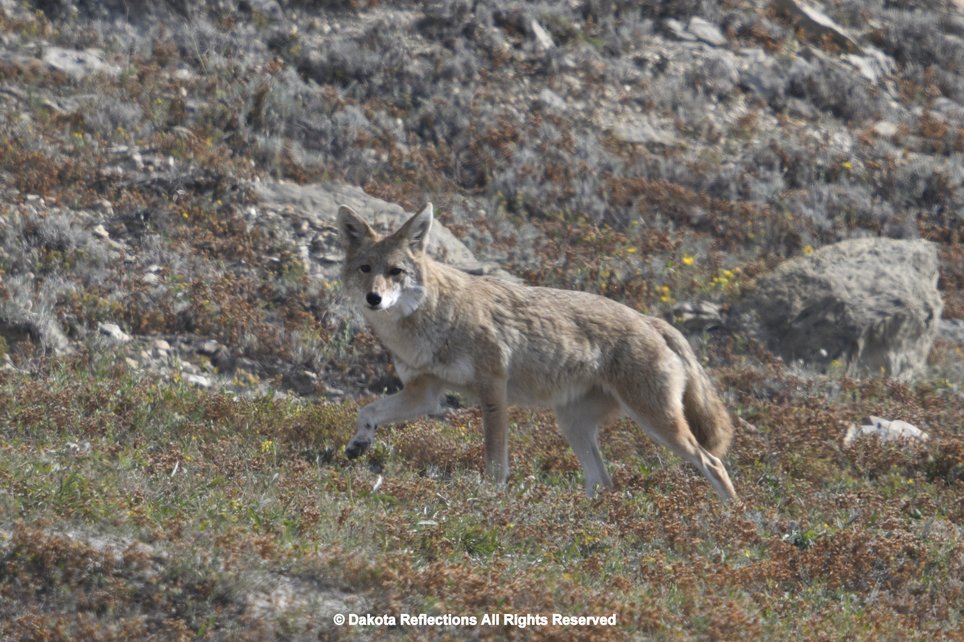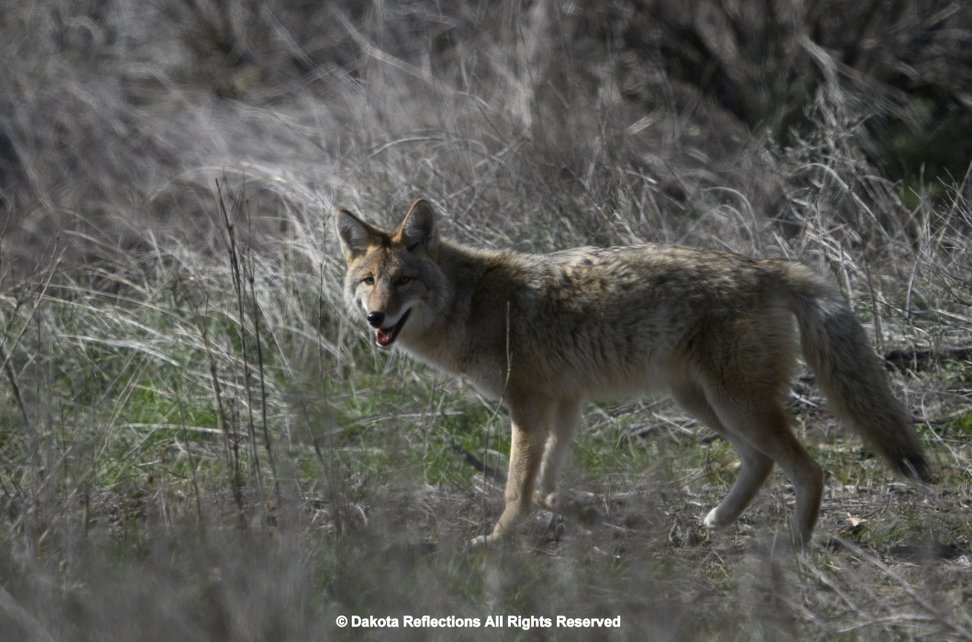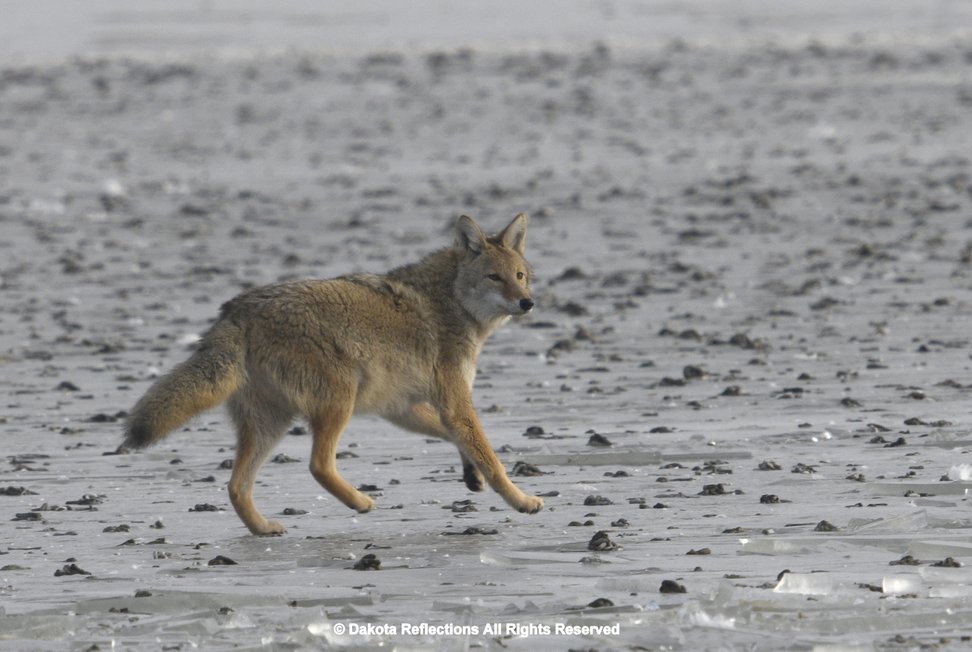Dakota Reflections
Prior to the arrival of Europeans, coyotes lived west of the Mississippi. As wolves were killed off by man, coyotes expanded their territory to the eastern United States and Canada, Alaska, Central America, and possibly, in the future, South America. Despite numerous efforts by man to control or eradicate them, coyotes have proven resilient and now can be found even in heavily urban areas.
Coyote Fun Facts
- They are found in most of the United States, southern and western Canada, Alaska, Mexico and much of Central America
- Coyotes are monogamous and have litters in the spring averaging 6 pups
- Solitary coyotes howl
- Coyotes eat a great variety of foods including: bison calves, deer, bighorn sheep, rabbits, prairie dogs, mice, birds, lizards, snakes (including rattlesnakes), insects and berries
- Coyotes and badgers will sometimes hunt together and occasionally travel as companions
The Story Behind the Stretch
On September 27, 2016, I crawled out of the tent at 4:45 AM MT in 35 degrees F and climbed into the car to warm up. I then slowly drove to the valley where I hoped to see coyotes. As I slowed to park the car, I could see one coyote sleeping 30 yards away and another walking. I turned off the car and waited in the dark, eating some breakfast and listening to the radio. It was 2 hours before sunrise.
After one hour had passed, I heard several coyote howls which soon became a chorus as at least a dozen began to sign in from across the large valley. Suddenly, from very nearby, although it was totally dark, a loud howl commenced, which startled me. It was then followed by one bark. The other coyotes answered with more howling. Then it happened. The loudest noise I have ever heard from an animal, a deafening howl that reverberated through the valley which I swore shook the car, or maybe it was me. It took several seconds to echo in the valley and then all became silent. No more howls, the other coyotes had become silent. I thought to myself, it must have been that nearby sleeping coyote, although it was still pitch dark. A coyote to be reckoned with, one who could silence the other coyotes.
As the sky began to lighten, I could only see one, the sleeping coyote, lying in some grass which was covered with dew. Soon the sun lightened the surrounding hills and small streaks of sunlight started to fill the valley. The coyote heard some nearby prairie dogs chirp a warning. The coyote then arose, yawned, stretched and then moved 20 yards away and then laid down to sleep. The sunlight had now filled the valley and I thought it was time to get acquainted. I slowly opened the door, grabbed my camera, and quietly walked diagonally away from the large coyote until I was 30 yards away. I turned and raised my camera, the sun was at my back. The coyote opened one eye to see me then dozed off. The coyote didn’t care that I was there. After 15 minutes of sleeping, the coyote rose to go on the morning rounds. Before departing, the coyote slowly stretched and I took the above photo. My friend had arrived and had parked his car next to mine. The coyote then began to walk towards me, off to the side and passed with 20 yards of me, looking at me as to say, “Who are you, old man with that camera, don’t you know that I am the silencer of howls.” I waved as the coyote passed me by and slowly walked back to the car, grateful for chance to see such a coyote.
How fast can a coyote run?
Very fast, they have been clocked at 43 mph, faster than white-tailed deer (30 mph) and mule deer (35 mph) but not as fast as elk (45 mph) or pronghorn (60 mph).
Stalking in a Prairie Dog Town
Patiently Waiting in a Prairie Dog Town
2018 Photos
This coyote had a problem, an icicle on the nose! No worries, the coyote's long tongue removed the nuisance icicle!!
Coyote moving in North Dakota badlands
Perhaps smelling where a bird had perched?
Pushing off and changing direction!
The dew claw is seen on the coyote's left paw. The name came about as the dew claw was said to brush dew away from grass. The coyote has 5 digits on the forefeet, including the dew claw and 4 digits on the hind feet.
Apex on an Apex
Coyotes are apex predators in the North Dakota Badlands. This coyote was resting on snow on the apex of a butte in late February 2018, surveying the coyote's kingdom.
Coyotes have such excellent hearing that they actually listen carefully for noises of movement under the snow before trying to find mice and voles.
Snow nose now equals icicle later!
Coyotes have an excellent sense of smell, vision and hearing. This coyote is smelling and following tracks made by a larger animal, possibly mule deer or pronghorn.
The coyote can be distinguished from dogs by their narrow snout, yellow eyes, small nose pad and large ears relative to its head size.
This female coyote was photographed in early May 2018 walking through a prairie dog town. She may have been pregnant with one nipple visible on her abdomen.
Mates for Life
Coyotes mate for life and this couple was photographed in the North Dakota badlands in May of 2018
Got an Itch!
About to have Babies!
During the pregnancy, the male frequently hunts alone and brings back food for the female. The female may line the den with dried grass or with fur pulled from her belly. The gestation period is 63 days, with an average litter size of six, though the number fluctuates depending on coyote population density and the abundance of food. Coyote pups are born in dens, hollow trees, or under ledges, and weigh 200 to 500 g (0.44 to 1.10 lb) at birth. They are completely dependent on milk for their first 10 days. The incisors erupt at about 12 days, the canines at 16, and the second premolars at 21. Their eyes open after 10 days, by which point the pups become increasingly more mobile, walking by 20 days, and running at the age of six weeks. The parents begin supplementing the pup's diet with regurgitated solid food after 12–15 days. By the age of four to six weeks, when their milk teeth are fully functional, the pups are given small food items such as mice, rabbits, or pieces of ungulate carcasses, with lactation steadily decreasing after two months. Unlike wolf pups, coyote pups begin seriously fighting (as opposed to play fighting) prior to engaging in play behavior. A common play behavior includes the coyote "hip-slam". By three weeks of age, coyote pups bite each other with less inhibition than wolf pups. By the age of four to five weeks, pups have established dominance hierarchies, and are by then more likely to play rather than fight. The male plays an active role in feeding, grooming, and guarding the pups, but abandons them if the female goes missing before the pups are completely weaned. The den is abandoned by June to July, and the pups follow their parents in patrolling their territory and hunting. Pups may leave their families in August, though can remain for much longer. The pups attain adult dimensions at eight months, and gain adult weight a month later.
https://en.wikipedia.org/wiki/Coyote
Burleigh County Sheriff's Facebook Page- Safety Tip Saturday November 10, 2018
We have been made aware of multiple coyote sightings within Burleigh County. Typically coyotes are nocturnal, but it is not uncommon to see them during the day. Merely seeing one is NOT a reason to call 911 or request assistance from Deputies. However, there are certain behaviors that are cause for alarm in regards to coyotes.
Specifically:
Coyotes named Wile E.
Coyotes carrying any products marked "ACME"
Coyotes dropping anvils from hot air balloons
Coyotes posting signs such as "detour" or "free bird seed"
Coyotes in possession of a giant magnet
Coyotes in possession of a catapult
Coyotes detonating "TNT"
Coyotes on roller skates with rockets attached
Coyotes attached to a ACME rocket
Please call 911 immediately if you witness any of the above behavior.
2020 Photographs
Coyote
Theodore Roosevelt National Park, North Dakota
July 24, 2020
Coyote
Theodore Roosevelt National Park, North Dakota
July 24, 2020
2021 Photographs
Sleeping in a Prairie Dog Town!
Coyote
Theodore Roosevelt National Park, North Dakota
April 28, 2021
Awake!
Coyote
Theodore Roosevelt National Park, North Dakota
April 28, 2021
Sleepy!
Coyote
Theodore Roosevelt National Park, North Dakota
April 28, 2021
Alert!
Coyote
Theodore Roosevelt National Park, North Dakota
April 28, 2021
Warning!
Coyote and Feral Horse
Theodore Roosevelt National Park, North Dakota
April 28, 2021
Alert!
Coyote
Theodore Roosevelt National Park, North Dakota
May 4, 2021
Stalking!
Coyote
Theodore Roosevelt National Park, North Dakota
May 4, 2021
Focusing!
Coyote
Theodore Roosevelt National Park, North Dakota
May 4, 2021
Silently Moving!
Coyote
Theodore Roosevelt National Park, North Dakota
May 4, 2021
Running!
Coyote
Theodore Roosevelt National Park, North Dakota
May 4, 2021
Coyotes can run up to 43 mph!
Coyote
Theodore Roosevelt National Park, North Dakota
September 27, 2021
Coyote
Theodore Roosevelt National Park, North Dakota
September 27, 2021
Coyote
Theodore Roosevelt National Park, North Dakota
September 27, 2021
Coyote
Theodore Roosevelt National Park, North Dakota
September 27, 2021
Coyote
Theodore Roosevelt National Park, North Dakota
September 27, 2021
Hard to Have Wood Ducks on the Menu!
Coyote and Wood Ducks
Theodore Roosevelt National Park, North Dakota
Photo of the Day- May 19, 2022
Afternoon Stroll!
Difficult to Find and Photograph!
Coyote
Theodore Roosevelt National Park, North Dakota
Photo of the Day- September 20, 2023
Coyote
Theodore Roosevelt National Park, North Dakota
September 20, 2023
Coyote
Theodore Roosevelt National Park, North Dakota
October 15, 2023
Coyote
Long Lake National Wildlife Refuge, North Dakota
November 3, 2023

